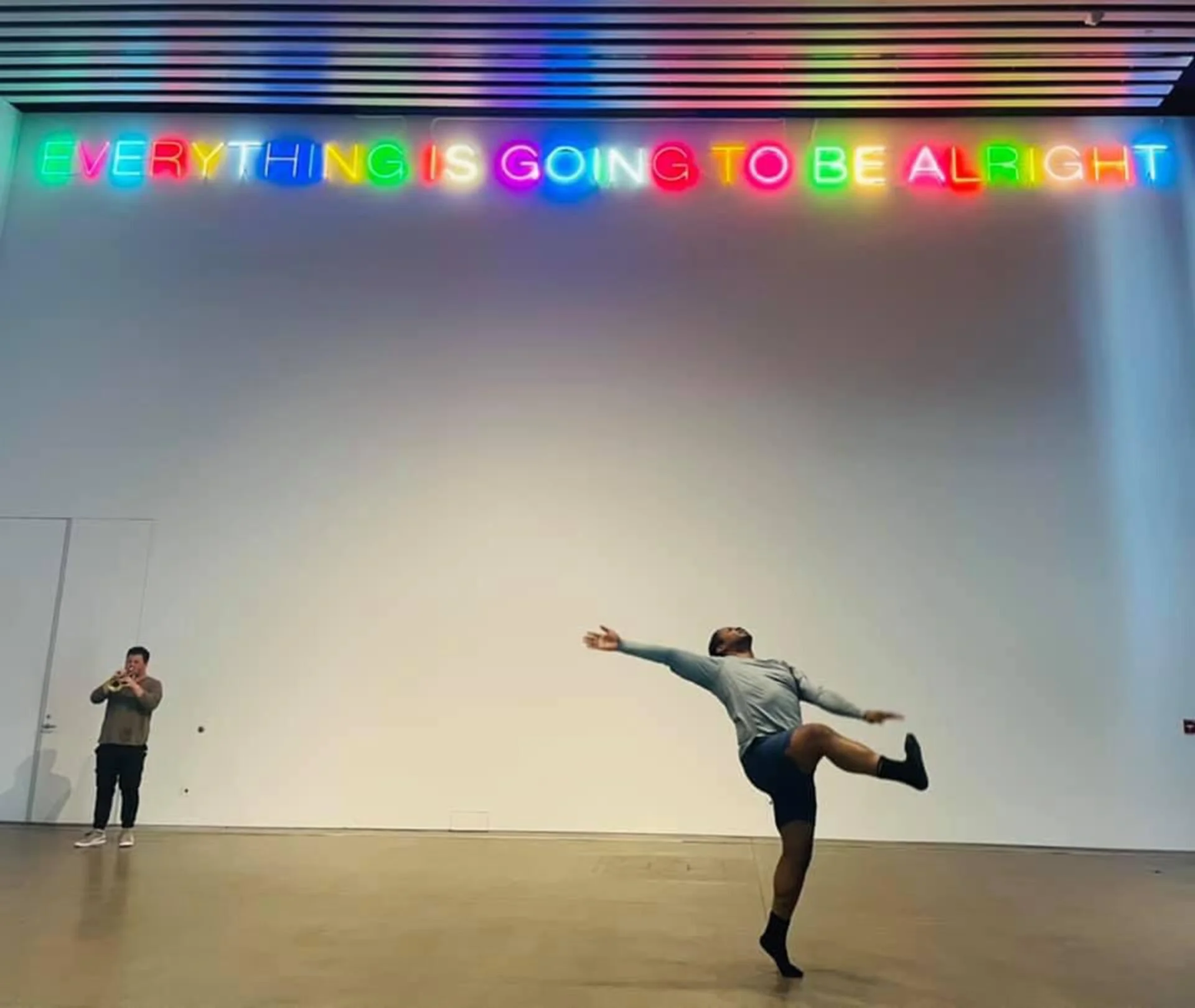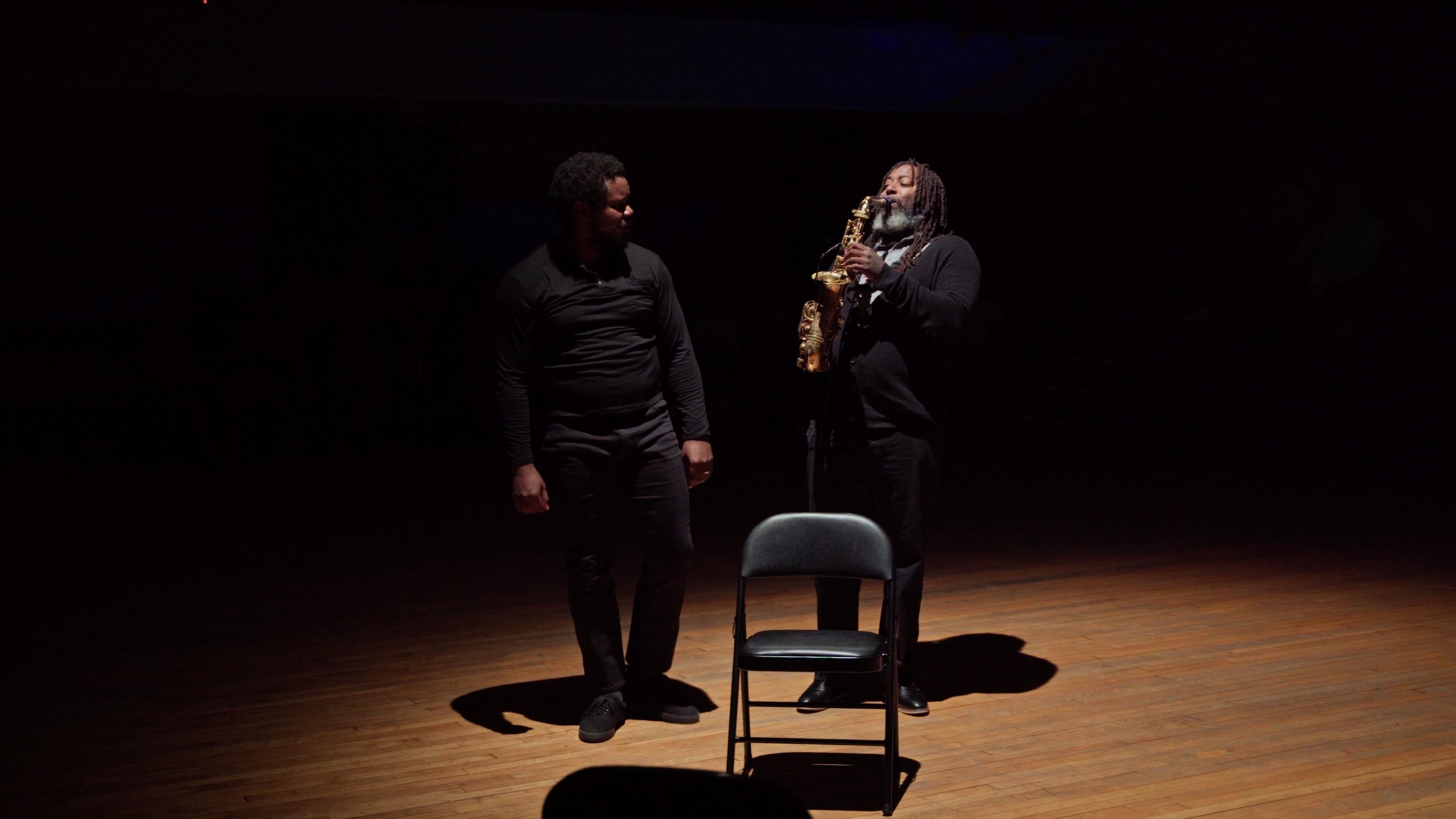Biography
Dominic Moore-Dunson is an award-winning choreographer based in Akron, Ohio. He is the Co-Founder and Creative Director of MooreDunson Works, a family-led creative studio and consulting company helping people move better — as teams, couples, and artists.
Alongside his wife and co-founder Ashley Moore-Dunson, Dominic leads the company’s growing slate of work. Its first expression is his career as a choreographer, while its second brand, THRIVE Leadership & Team Development, is currently active. Two additional brands — The Artist Playbook and Married in the Middle — are set to launch in 2026.
Through Urban Midwest Storytelling — work that reflects the emotional, cultural, and spiritual weight of growing up Black in post-industrial America — Dominic centers stories that bridge the personal, political, and familial, creating immersive experiences that challenge, uplift, and inspire.
Dominic is a 2024 Ohio Arts Council Individual Excellence Award recipient, was named one of Dance Magazine’s2023 “25 to Watch,” and is a former Associate Artist at the Atlantic Center for the Arts. His work has been presented nationally and featured in The New York Times, The Washington Post, and the Akron Beacon Journal, among others.
He is the creator of several signature works, including inCOPnegro: Aftermath, The Remember Balloons, and The Block— a digital essay series blending personal storytelling, satire, and cultural reflection.
His work engages audiences across generations, sparking conversations about race, memory, identity, and belonging. Together, Dominic and Ashley are building a creative ecosystem where artistry, leadership, and love intersect.
Official Artist Statement
I am a choreographer rooted in the expressive tradition of Urban Midwest Storytelling—a living continuation of the blues, reimagined in post-industrial cities shaped by the Great Migration. My work lives between subtle gesture and full-bodied movement, where a glance or shift of weight holds the same emotional weight as an explosive phrase that fills the space. I use the body as a vessel for emotional truth—a language translating the soul’s response to adversity, joy, and memory.
My creative process is improvisational and deeply collaborative, often created alongside live musicians. Together, we shape the physical and sonic worlds in real time—not layering dance over sound or sound over dance, but co-creating an emotional landscape. The dancers are musicians. The musicians are dancers. This call-and-response is central to the Black Diasporic tradition. We dig deep into that raw, spiritual well—and the fruit we find becomes our performance.
At the heart of my work is storytelling—not just personal, but intergenerational. I create dances that carry the stories of Black families in America, especially those like mine: shaped by migration, memory, and resilience. I grew up in a multigenerational home in Akron, Ohio, with my great-grandmother—born in Elizabeth, Mississippi, in 1915, deep in the Delta—who was likely the child or grandchild of enslaved people. The home I was raised in held the memory of that migration—the weight and spirit passed down through generations.
The mud of Mississippi becomes the rust of the Midwest. Cotton fields become factories. Spirituals become jazz. And the blues becomes my movement.
I see my work as a continuation of this legacy. Urban Midwest Storytelling is the blues in a new context—a language of survival, imagination, and possibility. It’s expression born from struggle, yet infused with the heroic optimism that defines Black American cultural life. I want people to feel the blues in my choreography—not as a musical style, but as a spirit: the will to find beauty amid the wreckage.
What makes my work unique is its lineage. It’s not theoretical—it’s personal, ancestral, embodied. It draws from Black Southern migration, jazz and spirituals, factory towns and front porches, childhood memories and inherited grief, and the quiet power of Black families using stories to survive and thrive. My work is both archive and prophecy—a living record of where we’ve been and a bold vision of what we carry forward.
I approach the creative process as documentation and performance as living archive. Like the West African griot, I see myself as a contemporary storyteller—a cultural keeper of memory and witness. I am an American griot, using the movement to preserve, honor, and reimagine the ever-evolving story of Black life in this country.




